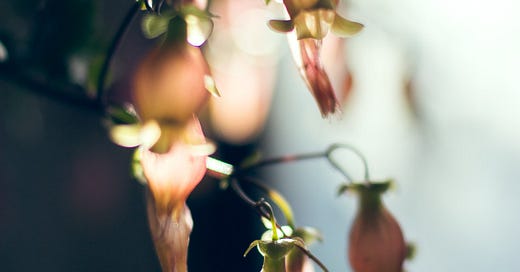The image of the pharmacy, neon-lit, sterile, and humming with efficiency, is an artefact of industrial modernity. But beneath that shiny convenience lies a fragile, just-in-time supply chain stretching across oceans, dependent on petrochemicals, geopolitics, and a merciless pricing war that values margin over medicine. If that system were to falter, what remains?
We do.
When the aisles go quiet, when the cold chain breaks, and when the automated refill system says ‘error,’ we won’t be left with nothing. We’ll be left with each other. Our bodies, our memories, our inner landscapes.
Memory as Medicine
Before healing was a job title, it was a shared memory. Recipes, remedies, and rituals were handed down mouth-to-mouth, hand-to-bowl, over garden fences and under cover of dusk. In the absence of formal systems, communities developed a distributed, flexible, deeply intuitive wellness network that didn’t require clinics or branded packaging.
The loss of that memory was never accidental. Western medicine’s rise was accompanied by the active erasure of local herbal knowledge, spiritual healing systems, and what scholar Donna Haraway might call ‘situated knowledges.’ Colonialism, capitalism, and misogyny all conspired to extract care from its context and repackage it as expertise you could only access through gatekeepers.
But the fungi have not forgotten. The plants have not forgotten. Neither, if you’re honest, have you.
The Pharmacy in the Garden
One of the most radical things you can do is plant calendula. Or lavender. Or anything that grows with its own intelligence and offers up healing without needing a barcode.
Post-collapse medicine won’t look like rows of antiseptic shelves. It will look like jars of plantain salve beside the sink. Teas made from red clover and dried citrus peel in old jam jars. Garlic on windowsills. It will be someone who knows which dock leaf soothes which sting. Someone who knows what the sweat smells like when it's just a fever, and what it smells like when it's something else.
It won’t be neat. It won’t be universal. But it will be alive. It will be context-specific, emotionally literate, and symbiotic.
We won’t just heal bodies. We’ll tend to shocks. To frights. To heartbreaks. We’ll remember that grief is a wound, and that songs, hands, and silence can stitch it.
First Aid for the Soul
In this speculative future, which, let’s be honest, is already leaking into the present, the first responder might be someone with a kettle and a clear voice. They’ll know how to sit with someone who is unraveling and not rush to fix. They’ll understand that a trauma response isn’t a malfunction.
We’ll trade the sterile pharmacy shelf for the mortar and pestle. Our prescriptions will sound like soup recipes. Garlic and thyme in broth for lingering bronchitis. A poultice of comfrey and plantain for that swollen knee. A mug of lemon balm tea and a phone call to your cousin when grief becomes feverish.
First aid kits will no longer be plastic boxes hidden under sinks. They’ll live on windowsills, in mason jars of oil, in bundles of drying herbs tied with string. The people in charge of these kits will be everyone. Aunties with balms. Uncles with liniments. Teens with tinctures and chat logs full of folk medicine TikToks. Elders who remember which weeds make the best salves and how to check for infection without a lab.
Healthcare will smell like damp soil, woodsmoke, crushed pine. It will taste like elderberry syrup and bitter tinctures diluted in dandelion tea. It will sound like stories being passed down by moonlight.
It doesn’t run on profit. It runs on reciprocity, reputation, and ritual. It isn’t scalable, and it shouldn’t be. Its value is in its embeddedness. You don’t need ten thousand units. You need ten people who give a damn.
This isn’t an indictment of science or emergency medicine. Hospitals are miraculous. Antibiotics have at one time or another saved us all. But the reality is that those systems are finite, fragile, and increasingly overstretched. We can no longer afford to leave the full weight of wellness to them alone.
Start Here: The Core of Your Future Apothecary
You don’t need a forest, a PhD, or a cauldron to begin. You need a few good plants, a notebook, and some time to listen. Here are a few foundational herbs to build a resilient, relational, kitchen-table apothecary with:
Kawakawa: A deep healer of skin, guts, and spirit. Antibacterial, analgesic, and sacred. A cornerstone for Aotearoa-based care.
Yarrow: Antiseptic, wound-stopping, fever-calming. Excellent for cuts, cramps, and boundary work.
Chamomile: Not just sleepytime tea. Soothes inflamed tissue and frayed nerves alike.
Thyme: Antiviral, antimicrobial, a bronchial champion. Great in syrups and steams.
Plantain: The weed, not the strange little banana. Astringent, anti-inflammatory, and magically adhesive to small humans’ scrapes.
Calendula: Sunshine incarnate. Antifungal, skin-soothing, lymphatic mover.
Lavender: Calming, antimicrobial, and a friend to both skin and psyche.
Lemon Balm: A balm indeed. Uplifting and antiviral, ideal for nervous tension and cold sores.
Elderberry: The flu fighter. Immune support in its sassiest form.
Nettle: Nutrient-dense, antihistamine, blood-building. The green multivitamin of the apocalypse.
Start with what grows near you. Learn what your weeds are whispering. Let your curiosity guide you more than your fear. And, most of all, share what you learn. The apothecary of the future doesn’t belong to one person. It belongs to the village.
This Is How We Win. Not with hoarded antibiotics or bug-out bags crammed with iodine tablets. We win with neighbours who know how to poultice a burn. With seed libraries and story circles and children who can name ten plants before they can tie their shoes.
We win with fermentation. With fire cider. With futures built not just in resistance to collapse, but in fidelity to care.
If the pharmacies go silent, the salves will still sing.




My heart sings for this too be reality one day